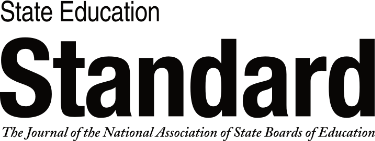With three school years touched by the pandemic so far, the extent of the damage to this generation of students is coming into focus. Three concerns are top of mind for state and district leaders: making up for disrupted learning, ensuring that schools have enough quality teachers and staff to lead this work, and building a diverse teacher workforce. Many states are tempted to lower requirements for teachers in the hopes that it will address some of these concerns.
Before signing on to such changes, state boards of education should seek evidence about the exact nature of the problems a policy change is designed to address, whether the change is likely to help, and what the unintended consequences might be. Is there evidence, for example, that lowering teacher requirements will bring more teachers into the schools that are struggling to hire them? And what inadvertent harm will students suffer at a time when their learning recovery is most fragile?
A Data-Driven Approach to Staffing Schools
Also In this Issue
Five Trends Shaping the Teaching Force
By Richard M. Ingersoll, Elizabeth Merrill, Daniel Stuckey, Gregory Collins and Brandon HarrisonState policymakers looking to increase recruitment and retention should keep an eye on these long-term trends.
The Uneven Landscape of Teacher Preparation
By Leslie T. FenwickState statutes impede students' equitable access to profession-ready teachers.
A Data-Driven Approach to Staffing Schools
By Hannah Putman and Heather PeskeLowering teacher standards may fail to solve actual pipeline problems and can create new ones.
Licensure Tests as Barriers to the Profession
By Victoria Van CleefStates should explore better means of assessing teachers' classroom readiness.
Teacher Preparation for Whole-Child Design
By Jennifer DePaoli and Ryan SaundersState leaders have a role in ensuring that educator preparation both models and reflects the science of learning and development.
Teacher Recruitment and Retention in Missouri
By Paul KatnikState leaders commit to efforts to attract and keep teachers in the classroom.
Ensuring Equity in Grow-Your-Own Programs
By Conra D. GistState-level criteria for programs' design can yield better outcomes in preparing and retaining diverse teachers.
Creating State Education Systems That Value Student Cultures
By William Rodick and Tanji Reed MarshallState boards can set the stage for learning environments that connect and engage all students.
Preparing Pre-K Teachers: Policy Considerations and Strategies
By Amaya Garcia and Cara SklarFour practices to increase the pool of skilled early educators stand out as promising.











 i
i
 i
i
 i
i